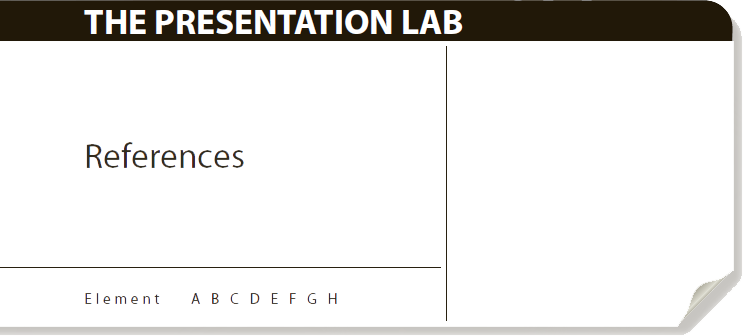Hawking, S. A Brief History of Time: From Big Bang to Black Holes. London: Bantam,1995.
Kawasaki, G. The 10/20/30 Rule of PowerPoint. Blog. 2005.
Kosslyn, S. M. Clear and to the Point: Eight Psychological Principles for Compelling PowerPoint® Presentations. New York: Oxford University Press, 2007.
Kosslyn, S. M., R. A. Kievit, A. G. Russell, and J. M. Shephard. PowerPoint® Presentation Flaws and Failures: A Psychological Analysis. Stanford, CA: Center for Advanced Study in the Behavioral Sciences, Stanford University, 2012.
Lester, P. M. “Syntactic Theory of Visual Communication.” California State University at Fullerton, 1994–1996.
Moon, Jon. How To Make an IMPACT: Influence, Inform and Impress with Your Reports, Presentations, Business Documents, Charts and Graphs (Financial Times Series). London: Financial Times/Prentice Hall, 2007.
Poehm, M. The PowerPoint Fallacy: Still Presenting or Already Fascinating? Geneva: Poehm Seminarfactory, 2011.
Reynolds, G. Presentation Zen: Simple Ideas on Presentation Design and Delivery (Voices That Matter). Berkeley: New Riders: 2011.
Get The Presentation Lab: Learn the Formula Behind Powerful Presentations now with the O’Reilly learning platform.
O’Reilly members experience books, live events, courses curated by job role, and more from O’Reilly and nearly 200 top publishers.



